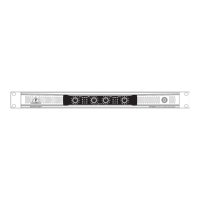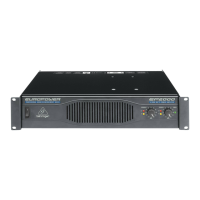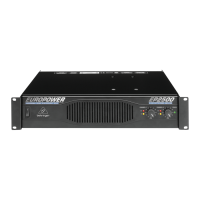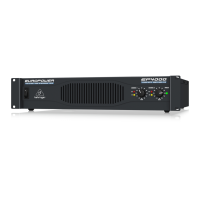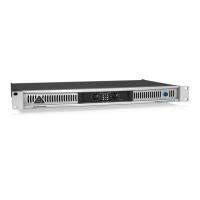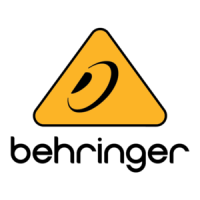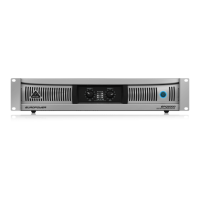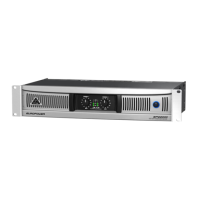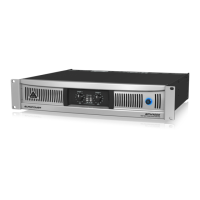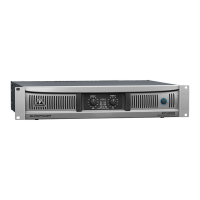7
EUROPOWER EP1500/EP2500
3. APPLICATIONS
+ The mono-bridged mode puts added demands on
amplifier and speakers. Excessive distortion may
occasionally completely mute the amps outputs
as well as cause permanent damage to the
speakers. Please assure that your speakers
(minimal impedance 4 Ohms) as well as the cables
used can handle the extra power generated in this
mode.
3. APPLICATIONS
+ Running EUROPOWER amplifiers in conjunction with
8-Ohm speakers with a power rating of at least 2 x
260 Watts (EP1500) and 2 x 450 Watts (EP2500) is
recommended to assure optimal operation.
3.1 Differences between 2-channel, parallel
and mono-bridged operating modes
2-channel mode is the most common operating mode of
amplifiers. Both channels operate fully independently from one
another. There is always a separate input signal as well as a
separate output signal.
Examples:
s 2-channel (stereo) playback
s Two independent mono signals, e.g. instrument signal and
monitor mix
s Bi-amp operation, whereby bass frequencies are run on
channel 1, and high frequencies on channel 2 (see chapter
3.2, Bi-amping).
Fig. 3.1: 2-channel mode
Fig. 3.2: DIP switch positions for 2-channel operation
Parallel mode is identical to 2-channel mode, except for the
inputs of both channels are internally connected in parallel. One
input signal routes parallel both channels, while their filters etc.
are independently controlled.
Examples:
s A mono signal is fed into both channels, whereby amplifi-
cation of each channel is controlled separately.
s Parallel mode (as described above) with connection of an
additional amp via the remaining free input connector. The
input signal is present there, and may be connected to
further equipment.
+ When connecting a balanced input signal, please
make sure to exclusively use balanced cables for
passing the signal further on. Otherwise, a single
unbalanced cable can turn the entire signal
unbalanced.
Fig. 3.3: Parallel operation
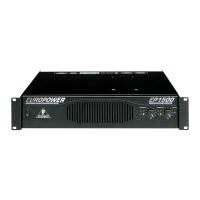
